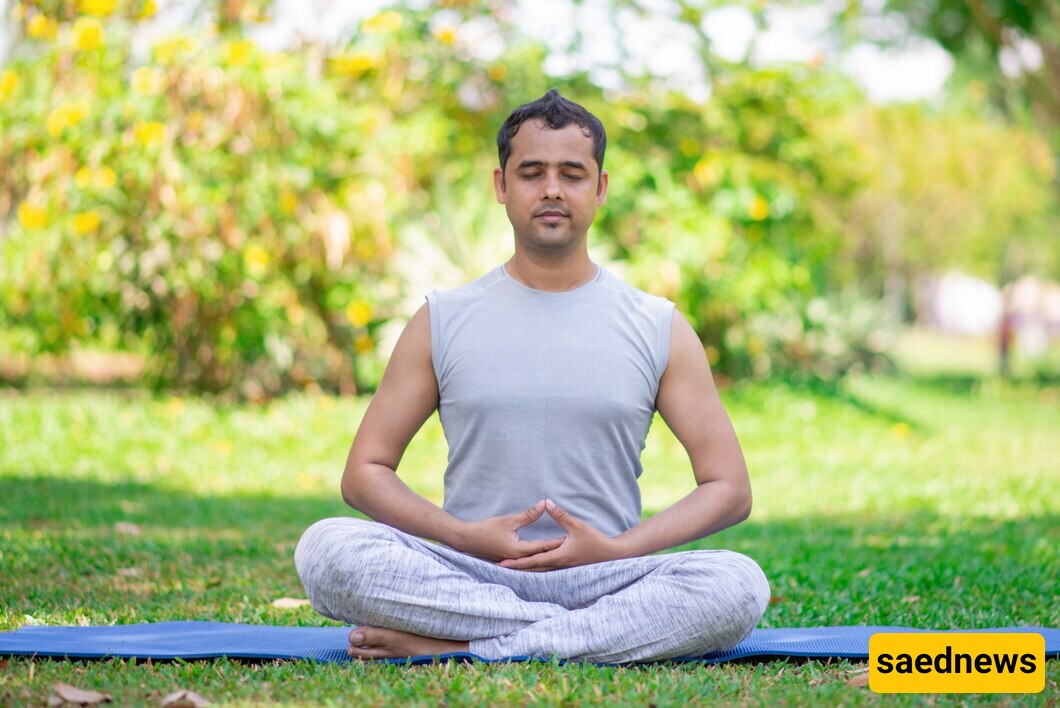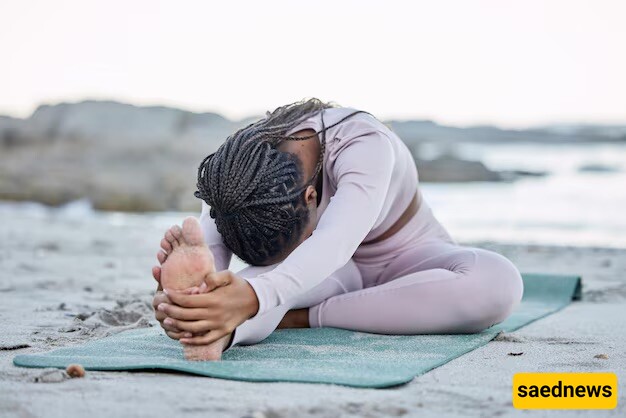Many people today suffer from the painful condition known as kidney stones. There are many ways to help pass kidney stones more effectively, and one of the best methods is yoga. Stay with Saed News.

Kidney stones, or nephrolithiasis, refer to the formation of hard, crystalline mineral deposits in the kidneys or urinary tract. It is estimated that one in every 20 people will experience kidney stones at some point in their life. Inadequate hydration is one of the main causes of worsening kidney stone symptoms and signs. The primary cause of kidney stones is inadequate hydration. Other factors such as family history, obesity, high-protein diets, excess salt and sugar consumption, inflammatory bowel disease, and others also contribute to the formation of kidney stones. Although kidney stones form in the kidneys, over time they can move to other parts of the urinary system, causing symptoms and discomfort. Kidney stones can cause severe pain in the back area. You may also experience other symptoms such as red urine, frequent urination, and a burning sensation while urinating.
As discussed in previous articles about health and therapeutic sports, yoga does not cure the disease completely. In addition to yoga, medical care and fitness are also recommended. Yoga for kidney stones aims to relieve pain and symptoms while strengthening kidney function. With regular yoga practice, small kidney stones can be effectively passed.

Today, many people of all age groups suffer from kidney stones. Both men and women, regardless of age, are equally prone to this painful condition. Practicing yoga asanas can effectively help treat kidney stones and can be a natural way to relieve the condition. Kidney stones form when mineral and salt deposits accumulate in the kidneys, causing sudden, sharp abdominal pain that can negatively affect health. Yoga poses can help with effective stretching, aiding in the elimination of kidney stones.
The Camel Pose is extremely effective in treating kidney stones. It helps treat kidney stones and prevents them from forming. Additionally, it alleviates pain and blood circulation issues during this condition.
How to do it:
Sit on your knees and place your hands behind your head. Push your hips and thighs forward. Lean backward, grab your heels, and hold the position for 15 seconds, breathing deeply. Then, slowly return to the starting position. If you have back injuries or have had surgery, avoid this pose.
Another effective asana for treating and relieving kidney stones is the Leg Lift Pose. This position helps relax the muscles in the back, abdomen, legs, and pelvis. By contracting the muscles, kidney and liver functions improve. Any pain caused by kidney stones will also be alleviated.
How to do it:
Lie on your back, with your arms at your sides, palms flat on the floor. On an inhale, lift your legs as high as possible and lower them on an exhale. Ensure your legs are perpendicular to the floor. Hold the position for a few moments, then return to the starting position and repeat.
This pose, known as Pawanmuktasana, stretches the entire body from head to toe and works effectively on the back and kidneys. It reduces pain from kidney stones and alleviates cramps. This simple and cost-free method can help you get rid of kidney stones.
How to do it:
Lie on your back and inhale slowly. Bring your knees towards your chest, touching your forehead to your knees, and take a deep breath. Exhale and release, then repeat. Avoid this pose if you have spine issues.
This pose, also known as Balasana, is effective for treating kidney stones. It not only helps reduce pain but also prevents the condition from worsening. People with digestive or kidney issues can practice this pose regularly to prevent further harm.
How to do it:
Kneel down and sit on your feet with your heels facing outward (in the asana position). Stretch your arms overhead and make sure your breathing is correct. Extend your arms as far as possible, lowering your torso between your thighs, with your palms facing downward. Hold this position for 30 seconds, stay calm, and then return to the starting position, repeating the process.
Warning: Avoid this pose if you're pregnant or have knee injuries.
This pose, known as Ardha Matsyendrasana, helps improve kidney function, reduces pain, and ensures proper blood flow to the liver. If you have issues with your liver, pancreas, or abdomen, this yoga pose will resolve those problems. These issues are major contributors to kidney problems, and regular practice of this pose can be very beneficial.
How to do it:
Sit comfortably on the floor and bend your left knee, placing your left heel under your right hip. Cross your right leg over your left knee and place your left hand on your right knee. Place your right hand behind your head and gently twist your torso to the right. Look over your right shoulder, keeping your back straight, and continue your breath. Slowly return to the starting position and repeat.
Tip: Avoid this pose during pregnancy or if you have a hernia.
The Eagle Pose, also known as Garudasana, is effective for treating kidney problems. This pose improves blood flow to the kidneys and strengthens kidney function. It also enhances balance and strengthens the abdominal muscles.
How to do it:
Stand straight and gently lift your right leg, crossing it over your left thigh, balancing your body on your left leg. Raise your elbows to shoulder height, then twist your right elbow over the left one, bringing your palms together. Perform deep breaths and hold this position for 20 seconds. Stay calm, then return to the starting position and repeat. End the pose by bending into the corpse position (Savasana).
The Bow Pose, also known as Dhanurasana, is incredibly effective in eliminating kidney stones and reducing pelvic pain. It also helps alleviate issues related to digestion and improves kidney function.
How to do it:
Lie on your stomach and keep your arms at your sides. Separate your feet and take a deep breath. Bend your knees and hold your ankles with your hands, lifting your chest off the floor while simultaneously pulling your feet towards your back. Keep your head up and your body in a bow shape. Hold this pose for 20-30 seconds and remain calm. If you have back pain or a hernia, avoid this pose.
The Cobra Pose, known as Bhujangasana, improves circulation throughout the body, stimulates abdominal organs, and helps treat kidney pain and stones. This pose stretches the kidneys and helps cleanse blockages.
How to do it:
Lie on your stomach with your palms on the floor. Inhale as you lift your upper torso while feeling a stretch, breathing deeply. Stay calm and repeat the process.
It might be hard to believe, but Pranayama is extremely beneficial in treating and passing kidney stones. This breathing technique helps relax the entire body and mind. Regular practice of this technique keeps internal organs healthy, improves overall function, and stimulates body parts. It controls blood pressure and reduces chronic illnesses.
Sit comfortably with your spine straight and close your eyes. Take a deep breath and begin deep inhalations and exhalations. Focus on your breathing and hold the position for 10-15 minutes.
The above-mentioned yoga poses are the most effective solutions for treating kidney stones. Regular practice of these poses can significantly improve kidney health, help eliminate stones, and relieve pain.

